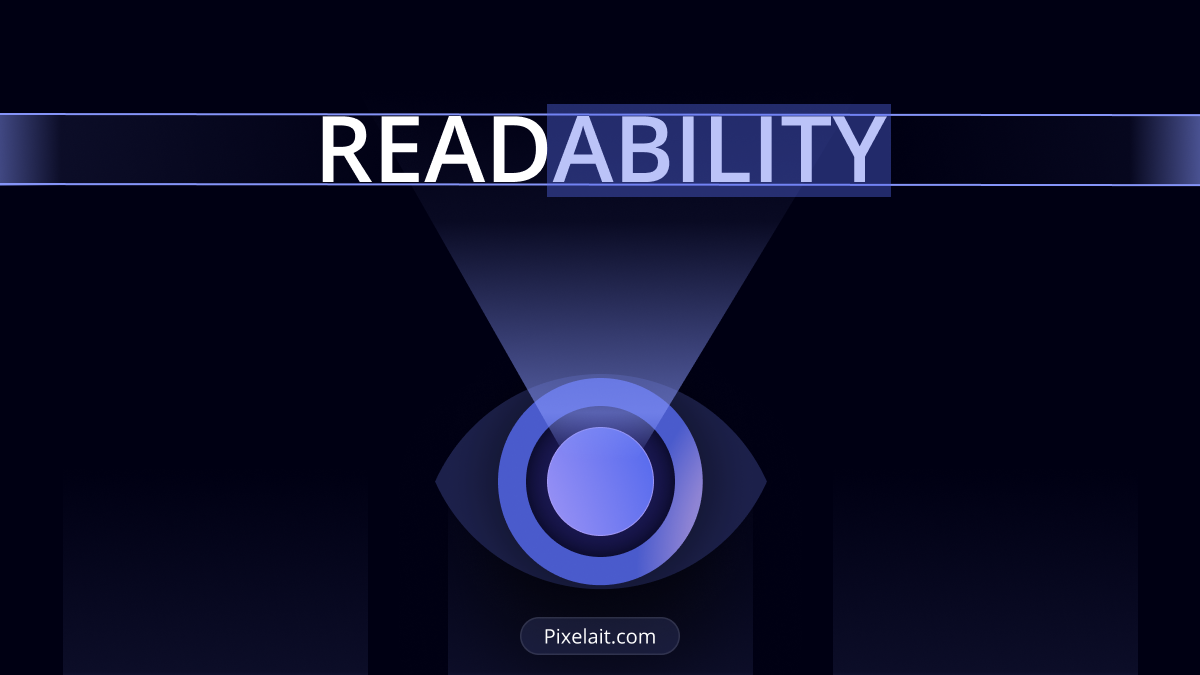Introduction
In the digital cosmos, where every pixel counts, ensuring your UI texts are clear and engaging is paramount. Implementing UI text best practices is not just an art; it’s a strategic element of design that directly impacts usability. As we’ve detailed in How Good UI Affects Business: The Unseen Impact of User Interface Design, the effectiveness of UI goes beyond just visual appeal. But what makes a text ‘readable’? Beyond aesthetics, it’s about facilitating comprehension and minimizing cognitive load. Let’s delve deeper into the cornerstone principles of crafting texts that captivate and effectively communicate.
1. Crystal Clear Typography
A readable text starts with the right typeface. Fonts like Arial, Roboto, and Helvetica have consistently been digital darlings due to their clean lines and distinct characters. But it doesn’t end there. Kerning, letter spacing, and font-weight all play a role in ensuring your texts are legible and scannable. Remember, the aim is to prioritize simplicity and legibility over ornate designs.
2. Captivating Contrast
Ever tried reading yellow text on a white background? It’s a digital nightmare. Beyond basic aesthetics, contrast plays a significant role in accessibility, especially for those with visual impairments. This aligns with our discussions on Mastering the Art of UI Color Palettes: Rules to Live By. Optimal contrast ensures your text stands out against its backdrop, making it visually appealing and easy to digest. Regularly utilizing tools like contrast ratio analyzers can ensure your UI remains inclusive and user-friendly.
3. Line Length & Layout Love
Imagine reading a full-width paragraph on a 27-inch monitor – it’s tedious and tiresome. A controlled line length aids in guiding the reader’s eyes in a comfortable flow from one line to the next. Maintaining an optimal line length (50-75 characters) keeps readers engaged and reduces eye fatigue. And don’t forget the spaces between those lines! Proper line spacing prevents texts from feeling cramped and enhances overall readability. Discover more about the optimal text line length for readability from Designary.
4. Hierarchical Harmony
Structure your text like a well-composed song, with varying beats and rhythms. Clear headings, subheadings, and body text create a rhythm for readers, guiding them through the content’s crescendos and diminuendos. This visual hierarchy, established through varied font sizes, styles, and weights, ensures your message is effortlessly consumed and understood at a glance.
5. Contextual Color Choices
Colors do more than beautify; they communicate. Colors evoke emotions, set tones, and even influence decisions. Using them wisely in UI texts can subtly guide user reactions and behaviors. However, it’s paramount to ensure that your color choices align with the message you’re conveying. A ‘Delete’ button in bright green might not only confuse users but also lead them to unintended actions, while a ‘Success’ message in red might sow doubt instead of assurance.
Conclusion
Crafting a readable UI text is indeed an art, but it’s also underpinned by scientific principles of visual perception and cognition. By anchoring your design around these five pillars, you’re not just setting your platform up for aesthetic success but ensuring an intuitive user experience. In the grand theatre of digital design, readability isn’t merely an asset—it’s a mandate. Equip your UI with the voice it deserves, and let it sing harmoniously to audiences far and wide.
